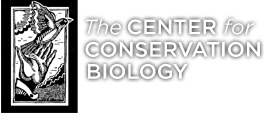NORTH AMERICA POPULATIONS

The peregrine falcon is essentially cosmopolitan in its distribution. Three races have been described in North America including F. p. pealei, F. p. tundrius and F. p. anatum. Falco p. pealei is a large, dark, sedentary form inhabiting the island chains of the Pacific Northwest. Falco p. tundrius is a paler-colored, smaller, highly migratory form with a breeding distribution limited to the nearctic tundra region. Falco p. anatum is a large, forest-inhabiting race that is variable in its migratory behavior. Its range spans the continent, intergrading with tundrius to the north and limited to north-central Mexico to the south. Peregrines that historically nested in Virginia were an anatum subpopulation referred to as the Appalachian peregrine, and the population was comprised of individuals larger and darker than the other subpopulations of the race.
HISTORIC VIRGINIA POPULATION

Big Schloss Mountain, VA. Photo by McGregor McCance.
The historic status and distribution of peregrine falcons in Virginia is not completely known. No systematic survey of the species was completed prior to the loss of the population. Our understanding of the historic population is based on breeding sites documented by falconers, egg collectors, and the bird watching community. These documented locations are biased toward human population centers and areas that were accessible. Consequently, there is very little known about the status of peregrines in the more remote portions of the state.
There have been 24 historical peregrine eyries documented in the Appalachians of Virginia. Mountain nest sites were open rock faces. These nesting areas are particularly skewed to the upper portions of Shenandoah National Park and Blue Ridge Mountains. Seven locations were clustered in Shenandoah National Park. In addition to the mountain eyries, two nesting sites were documented on old osprey nests on the Delmarva Peninsula.
POPULATION DECLINE
The historic population of peregrine falcons was impacted by a host of factors. Great-horned owls are known to be a natural enemy of peregrines and prey on chicks. Humans collected eggs from eyries, hunted both adults and young, and destroyed many nesting sites. However, prior to the 1940’s, the breeding population appears to have been relatively stable. It was not until the post World War II period that peregrine populations began to show signs of a precipitous decline.
The widespread use of organochlorine pesticides that began in the 1940’s was the principal factor causing population declines in peregrine falcons and many other birds of prey. Organochlorines and their metabolites, including DDT, DDE, aldrin, dieldrin, and others are stable, persistent compounds that are stored in the fatty tissues of animals feeding on contaminated food. Use of these chemicals peaked in the 1950’s and early 1960’s and continued through the early 1970’s. Although these compounds may cause direct mortality of adults, they are also responsible for reproductive failures. Egg-shell thinning, egg breakage, addling, and hatching failure have all been attributed to elevated contaminant levels in females. During the period of highest pesticide use, nesting failures were widespread and successful reproduction in heavily contaminated areas ceased entirely.
The broad reduction in breeding success resulted in a steady decline for many peregrine falcon populations in North America. The degree of exposure to pesticides varied among regions, such that numbers in more heavily contaminated areas suffered greater declines. Peregrines nesting in the agricultural and forested areas east of the Mississippi River were the most heavily contaminated and were essentially extirpated. The peregrine falcon was believed to be extinct in Virginia as a breeding species by the early 1960’s.
POPULATION RECOVERY
There were no peregrine falcons known to nest in Virginia between the early 1960’s and the early 1980’s. Following the ban of DDT and similar compounds in the 1970’s and an intense reintroduction effort conducted by Center for Conservation Biology personnel and other partner organizations, the peregrine falcon population in Virginia has made a slow but steady recovery. From a single breeding pair in 1981, the breeding population is now approaching 20 pairs. However, productivity remains somewhat erratic and patchy. A U.S. Fish and Wildlife Service analysis of addled eggs collected in Virginia in the early 1990’s showed levels of DDE, Dieldrin, and egg-shell thinning that have been shown previously to have an adverse impact on reproduction. In addition, turnover rates of adults within monitored breeding sites appear abnormally high. At present, the long-term viability of the Virginia population remains questionable. Continued monitoring and management of this population is needed to ensure that the population will continue to recover.
CURRENT VIRGINIA BREEDING POPULATION
The population of peregrine falcons known to breed in Virginia is currently centered on the Coastal Plain. Currently, occupied territories are on 9 peregrine towers and 2 fishing shack on the Delmarva Peninsula; 5 bridges, 1 power plant stack, and 1 high-rise building in the coastal plain; and 4 natural cliff sites in the mountains.

